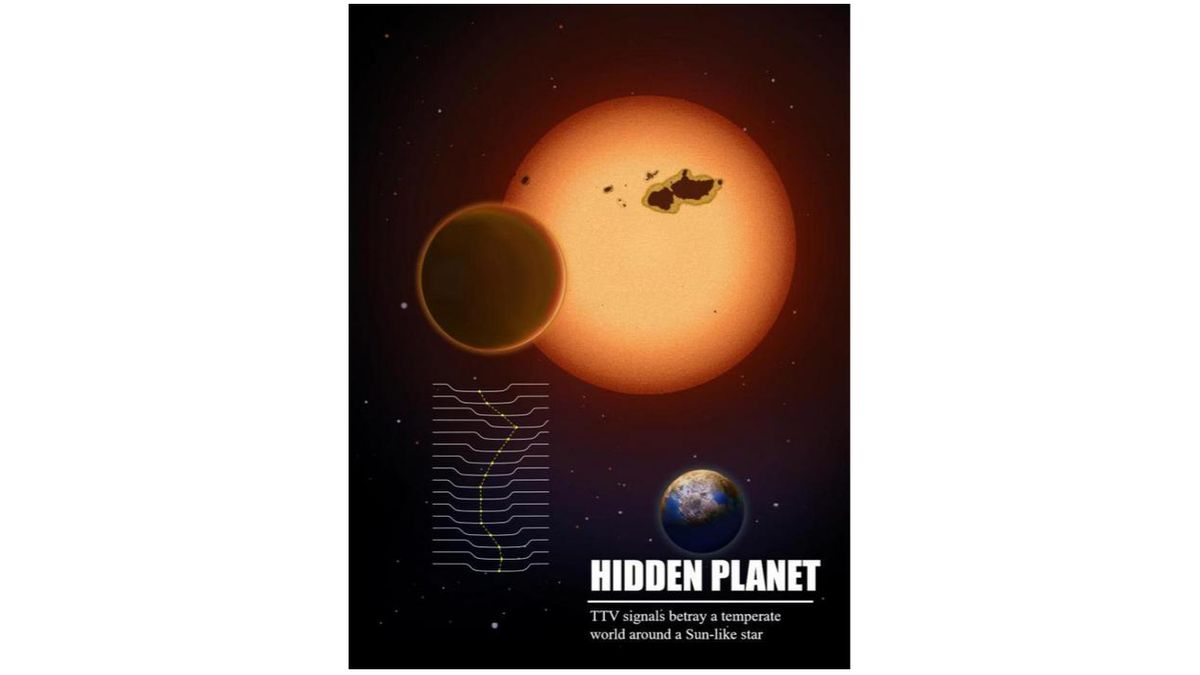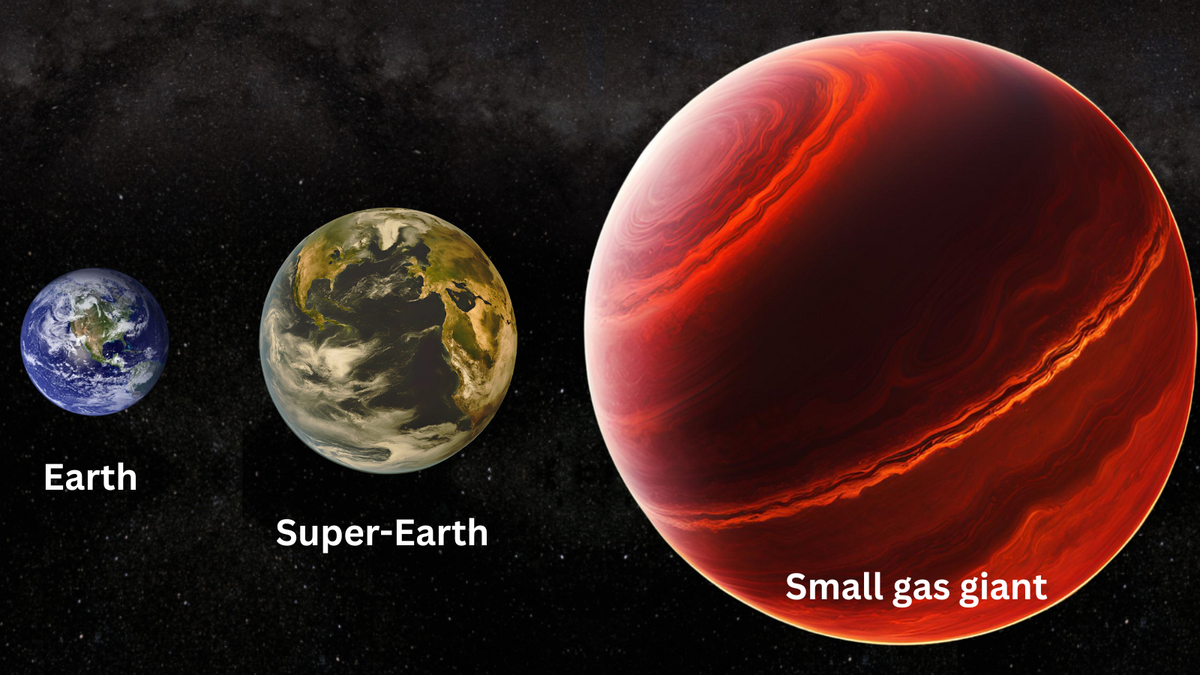A huge “super-Earth” with an extreme climate that results in it being habitable for only part of its orbit has been discovered orbiting a star 2,472 light years away. And the most remarkable thing is, it was discovered without even being directly detected.
The discovery of the exoplanet, a super-Earth called Kepler-735c, is all down to something called transit timing variations, or TTVs for short.
Let’s set the scene. One of the primary ways of discovering exoplanets is by looking for when they transit, or pass in front of, their star. As they do so, they block a small fraction of that star’s light, and, based on the size of this dip in stellar brightness, we can determine how large the transiting planet must be. Indeed, this was how the most successful exoplanet hunter so far, NASA‘s Kepler space telescope, discovered over 3,300 confirmed exoplanets and thousands more candidates.

There are downsides to detecting exoplanets via transits, however. One is that the technique is biased toward planets on short orbits close to their star, which means they transit more often and are easier to see. Transits also require a precise alignment between the orbital plane of a planetary system and our line of sight. Even a small tilt might mean we cannot see planets on wider orbits transiting.
Those unseen planets on wider orbits can still make their presence felt, however, in the form of TTVs. Ordinarily, transits are as regular as clockwork, but in some cases astronomers have noticed that a planet’s transit can be delayed, or occur ahead of schedule, and that this is being caused by the gravity of other planets tugging on the transiting world.
Sometimes we can see those other planets transiting as well — the seven-planet TRAPPIST-1 system is a great example. Often, though, we can’t see the planet that is causing the variations, but the size and frequency of the TTVs can tell us about the orbital period and mass of these hidden worlds.
Related: James Webb telescope spots ‘groundbreaking’ molecule in scorching clouds of giant ‘hell planet’

One such planet that has been found to experience TTVs is Kepler-725b. It’s a gas giant planet orbiting a yellow sun-like star that was discovered by the now-defunct Kepler spacecraft.
“By analyzing the TTV signals of Kepler-725b, a gas giant planet with a 39.64-day period in the same system, the team has successfully inferred the mass and orbital parameters of the hidden planet Kepler-725c,” Sun Leilei, of the Yunnan Observatories of the Chinese Academy of Sciences, said in a statement. Sun is the lead author of a new study revealing the existence of this hidden world.
Kepler-725c’s mass is quite significant — 10 times greater than the mass of Earth. This places it in the upper echelons of a type of planet called super-Earths — giant, probably rocky worlds. We don’t have an example of a super-Earth in our solar system, so we don’t really know what such planets are like. Planetary scientists are still grappling with theoretical models that attempt to describe the properties of super-Earth worlds. Would they be wrapped in a dense atmosphere? Could they maintain plate tectonics? How would their higher surface gravity affect the evolution of life? Definitive answers to these questions have not yet been forthcoming.
Meanwhile, the planet’s orbit is unusual to say the least. It is highly elliptical, with an eccentricity of 0.44. For comparison, Earth’s orbit has an eccentricity of 0.0167 and is therefore close to circular; at the other extreme, an orbital eccentricity of 1 would be parabolic. Kepler-7825c’s orbit is oval-shaped, meaning that at some points in its orbit it is much closer to its star than at other times. While overall Kepler-725c receives 1.4 times as much heat from its star as Earth does from the sun, this is just the average over the course of its orbit, and at times it is receiving less.
If Kepler-725c has an atmosphere, then the difference in solar heating at different times in its orbit could wreak havoc on its climate. In fact, the high orbital eccentricity actually means that the exoplanet only spends part of its orbit in the habitable zone, which is a circular zone around the star at a distance where temperatures are suitable for liquid water on a planet’s surface.
Does this mean that Kepler-725c is only habitable for part of its 207.5-Earth-day year? What would happen to any life that might exist on the planet during the periods that it is outside of the habitable zone? Again, these are theoretical problems that scientists have been wrestling with, but now the existence of Kepler-725c suddenly makes them very real problems. However, because we do not see Kepler-725c transit, it will not be possible to probe its atmosphere with the James Webb Space Telescope, which uses sunlight filtered through a planet’s atmosphere to make deductions about the properties and composition of that atmosphere.
Fortunately, there may be more such worlds out there to study. It is expected that when the European Space Agency‘s PLATO (PLAnetary Transits and Oscillations of stars) spacecraft launches in 2026 as our most sensitive exoplanet-detecting mission yet, it will be able to find many more worlds through TTVs. And, unlike radial velocity and transit measurements, which tend to be biased toward finding short-period exoplanets, TTVs open a window onto planets on wider orbits that are not seen to transit.
“[Kepler-725c’s discovery] demonstrates the potential of the TTV technique to detect low-mass planets in habitable zones of sun-like stars,” said Sun.
By doing so, the TTV method will help further the search for life in the universe, if only in providing more statistics as to the numbers of habitable zone planets that are out there.
The discovery of Kepler-725c was reported June 3 in the journal Nature Astronomy.
This article was originally published on Space.com.




